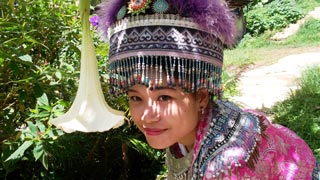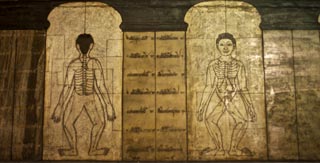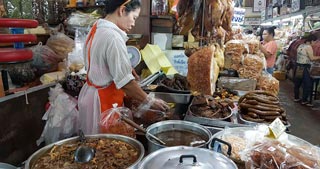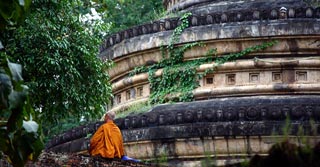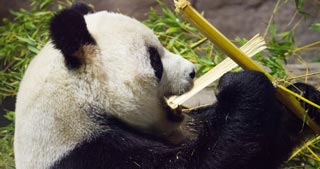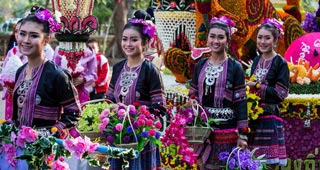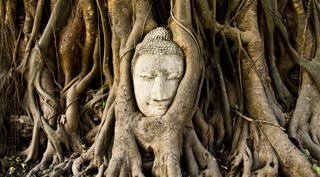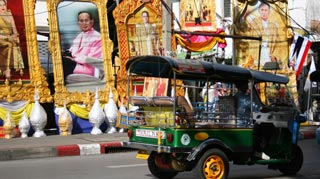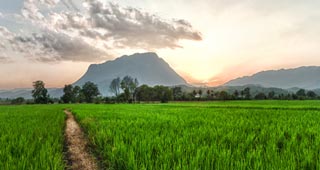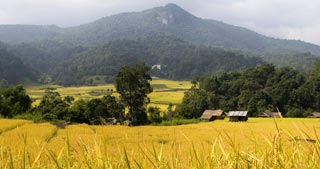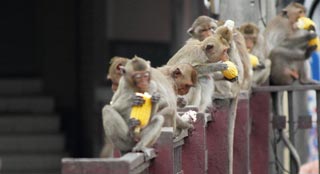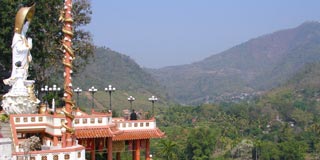Old City Best Temples Walking Tour
Chiang Mai city is jam-packed with Buddhist temples and shrines - with an estimated 35 temples within the old city walls and an even higher number in the downtown area and suburbs. With this perplexing array of temples to choose from, you may wonder where on earth to start - especially as you will want to do other things during your stay in Chiang Mai as well as visiting temples. Our solution to this dilemma is a short walking tour in the Old Town, which takes in in four of the most significant and impressive temples in the city. Wat Phra Singh You start your mini-tour at Wat Phra Singh - undoubtedly Chiang Mai's most revered temple. Situated in the western part of the Old Town centre at far west end of the main street, Rachadamnoen Road, the entrance to the temple is guarded by lions ("Singhs"). Superficially,Wat Phra Singh may not engender the same feeling of awe that some of the massive Bangkok Wats inspire; neither is it is set against a backdrop of spectacular scenery, such as at Doi Suthep. But many visitors agree that there is a feeling of peace, harmony and a strong sense of authentic Buddhism and mysticism when you enter these ancient and hallowed environs. This is enhanced if you sit near the monks as they chant their Pali invocations. The complex of lavish buildings, set in beautifully kept grounds, lay testament to Wat Phra Singh'sWihan Lai Kham, built in 1345 to house the Phra Buddha Singh statue and is a good example of classical Lanna architecture. The murals inside the wihan (assembly hall) are also outstanding. Other buildings that are well worth a visit are: the Wihan Luang, which was rebuilt in 1925; the "Ubosot" (Ordination Hall), which was built in 1806 with 2 entrances and houses an impressive Buddha statue; the" Ho Trai", (temple library), which was built in classic Lanna architecture and reckoned to be one of the most beautiful temple libraries; and "The Phrathatluang" - the main chedi, built in 1345, which rises from a classical Lanna base and features the front halves of two elephants emerging from either side. The monks here are very friendly and like a chat. Wat Chedi Luang Next on your tour is Wat Chedi Luang, which means (Royal Chedi). Head straight out of the main entrance of Wat Phra Singh and walk 500m down Thanon Rachadamnoen and take a right at the lights (ATM on the corner), down Prapokklon Rd. You will soon pass the teak temple of Wat Phan Tao on your right and just a bit further you will get to the entrance to Wat Chedi Luang on your right. The centrepiece here is the massive, crumbling stupa, built in 1441 in the Lanna style, and which used to be the largest structure in Chiang Mai. The top of the chedi was subsequently destroyed - either by cannon fire or an earthquake - sometime in the 16th century. While not quite as impressive as Wat Phra Singh, Wat Chedi Luang, with its sprawling, atmospheric compound, that contains this gigantic partly-ruined, partly-restored chedi, and various pavilions is very popular with tourists; although the former temple is more revered by the locals. The famous Emerald Buddha, now at Wat Phra Kaew in Bangkok, used to reside in the eastern niche of this chedi until 1475, and today it contains a jade replica which was given to the temple by the King in 1995. Renovation work was carried out on the chedi during the 1990s, and if you wander around the outside, you can see the restoration work on the Naga stairways and other parts of the structure. It all looks a bit ad hoc, but the end result is still well worth a look. At the base of the Stupa, you will see five elephant statues but only the one on the far right is original - built of brick and stucco. The top of the spire was never restored due to lack of agreement over what it looked like. Inside the main wihan of the temple, you will find a standing Buddha statue (Phra Chao Attarot) with a disciple on either side. In another pavilion, you can see a striking reclining Buddha inside a Lanna-style wihan, and in another, a shrine containing the City Pillar (Làk Meuan), dating back to the 13th century. (Note - women are not allowed in this shrine). Smaller pavilions contain animist, 'guardian spirits', and there is an area in the grounds where you can chat to English-speaking monks. Wat Pan Tao Right next door to Wat Chedi Luang is Wat Pan Tao which you passed earlier, and although it is a small temple, it is worth a quick tour. Dating back to the 14th Century, it is one of the oldest temples in Chiang Mai, originally built as an ancillary temple to the nearby royal temple of Chedi Luang. An incredibly atmospheric temple, its exquisite wihan is entirely made of teak wood in the Lanna style, and was used as a throne hall for King Mahotara Prateth. The enormous teak prayer hall has 28 massive teak pillars, with dark teak panels and is full of saffron - coloured flags. It enshrines the sacred and graceful golden Phan Tao Buddha image. During the festival of Visakha Bucha (May or June), monks light hundreds of butter lamps around the pond in the temple grounds is delightful to watch. The grounds contain a 200-year-old Bodhi tree, a row of ancient bells, and a splendid little garden which has been cultivated with much love and attention. Wat Chiang Man From here, you will take a 1km walk (about 12 minutes), to your final stop on this mini temple-tour. Walk back out to Rachadamnoen Road, turn right and then left at the first road junction onto Ratchaphakhinai Road. Head north along this road, cross over Ratvithi Road, keep going past the next road junction, and you will soon see Wat Chiang Man on your left, about 650m from the junction with Rachadamnoen Road. We promise that you will not regret making the effort to come here, even on a hot day. Here, set in a peaceful, park-like environment, and free of the many annoying tourist trappings of temples nearer the town centre is Chiang Mai's oldest temple. Established in 1296, the site was used by King Mangrai as construction camp while he built Chiang Mai city. In front of the ordination hall there is a stone slab engraved in 1581, which has the earliest known reference to the city's founding. The oldest part of the temple complex is the tall Elephant-Chedi at the rear, which has five, life-sized brick-and-stucco elephants which appear to be carrying the upper parts of the chedi on their backs. Under the tall spire, is a large, bell-shaped golden chamber. The main wihan (hall) contains the oldest Buddha image built by the Lanna Kingdom which was cast in 1465. Don't miss the second, smaller wihan, which contains two ancient Buddha statues. One is the "Crystal Buddha'; 10cm tall, carved out of a clear quartz crystal and was originally crafted in 200AD for the King of Lopburi. The second is the Phra Sila statue, a stone carving in bas-relief, said to have been carved in Sri Lanka over 1,000 years ago. These two sacred Buddhas are set inside a beautiful altar. This is the end of your Old City temple tour. A good thing to follow this is the Old Town Culture and History highlight. To do this just head back down Ratchaphakhinai Road and turn right at Ratvithi Road. At the first crossroads turn right and Lanna Folk Museum is just on your right. Entry: Free - Please remember to dress discretely and cover your knees and shoulders. Open: 8:00am to 5:00pm.
Chiang Mai
Chiang Mai













